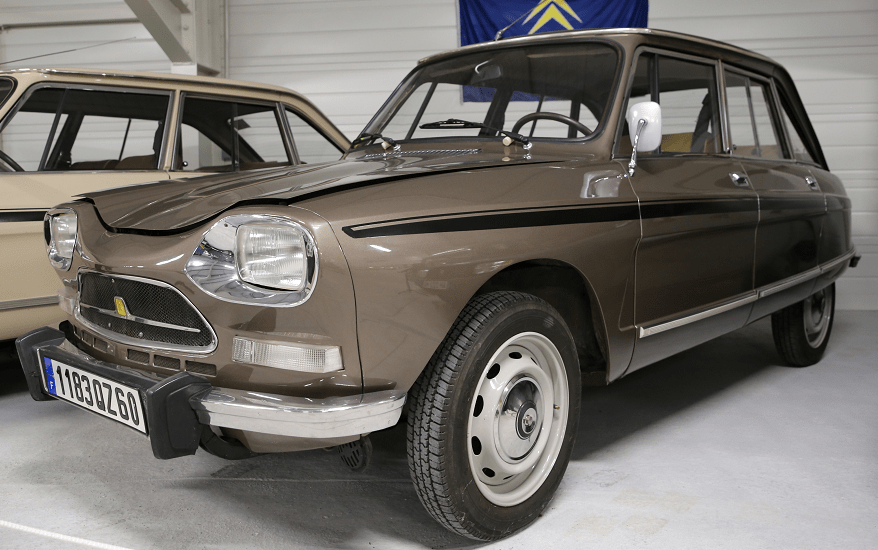The Citroën Ami is a four-door, front-wheel drive economy (B-segment) family car, manufactured and marketed by Citroën from 1961 to 1978.
The Ami was offered in saloon and estate/wagon/break body styles over two generations, the Ami 6 and the Ami 8. The later Ami 8 fastback saloon featured a steeply raked rear window, in contrast to the earlier reverse-raked rear window of the Ami 6 notchback.
Over 1,840,396 units were manufactured over the entire production run. The Ami and Citroën Dyane were replaced by the Citroën Visa and Citroën Axe.
Ami Super
The Ami Super, sometimes also called Ami 10, was a flat-4 variant powered by the engine of the GS and produced between 1973 and 1976.
The Ami Super was offered in the same three trim levels as the Ami 8, Luxe, Confort and Club on Saloon and Luxe and Confort on the ‘Break’ versions. These trim differences were fairly minor with Luxe models having bench front and rear seats and vinyl floor matting.
Confort trim offered reclining front seats in place of the front bench. The Club models can be considered the Pallas of the Ami range featured sound proofing pads on the floor and bulkhead, carpet including boot lining, stainless steel trim on the window frames and side rubbing strips on the doors and rear wings. Club trim was only available up to the end of the 1973 model year, after that point Ami 8 and Ami super were only available in Luxe and Confort specification.
From 1974 Ami super models were revamped to feature a double line graphic along the exterior of the body sides, either in black or silver depending on body colour, with slotted wheels and double line detailing on the hubcaps. The rear window also featured a graphic in white proclaiming “Ami Super 1015cm³”
As the Ami Super looked very much like an Ami 8, and could surprise many by demonstrating its dramatic performance advantage compared to the Ami 8 (55 hp compared to 32 hp). Quoted by Autocar magazine in the UK as a “Q car par excellence” sadly in France its 5CV tax rating made little sense in a small car and as a result sales were low compared to the Ami 8. In the UK however where no such tax penalties existed the Ami Super attracted healthy sales although is now a rare sight due to poor corrosion resistance, a feature suffered by many vehicles of this era.
The Ami Super production reached close to 42,000 in sedan and station wagon by February 1976. Production of the Ami 8 continued until early 1979 and reached in the region of 722,000 cars produced.
Place of manufacture: Rennes (France)
Date of manufacture: February 1975
Years of production: between March 1973 and September 1976
Total manufacture:
→ 44,820 copies (Sedan, Break and Service)
→ 25,000 copies (Sedan version)
Engine: 4 cylinders; 1015 cc
Power: 61 HP
Maximum speed: 140 km / h
Price at the time: 15,788 Francs













